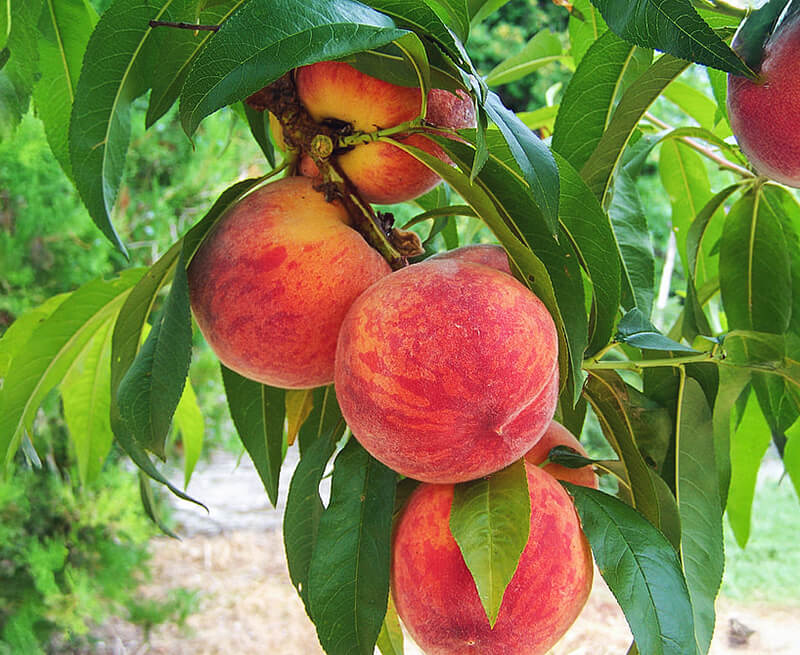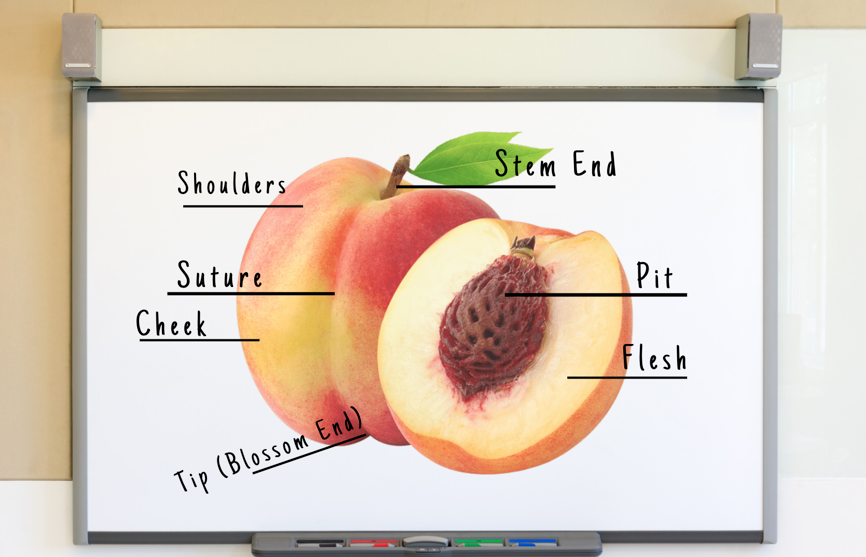Background Agricultural Connections
Peaches are a popular fruit known for their juicy flesh and fuzzy skin. It is believed that peaches originated in China and were associated with royalty. Later on, peaches were introduced to Europe. Spanish explorers brought peaches to the New World.2 In the United States, large-scale peach production did not begin until the 19th century.
California, South Carolina, Georgia, and New Jersey are the top peach-producing states in the nation. Georgia is well-known for its peaches, but many do not realize California and South Carolina each produce more peaches than Georgia. Peaches cannot tolerate extremely cold climates and they also cannot thrive in areas with very mild winters. Most varieties of peaches require over 500 hours of chilly weather during winter months to stimulate growth after the dormant period. This is why peaches can't be grown in the tropics. Peach trees blossom in the spring with bright pink flowers, and late frosts are always a concern for peach producers. If a late frost kills the flowers on peach trees, then peach production for the year is ruined.
The peach develops from a single ovary and ripens into a juicy edible part with a hard interior, also known as the stone or pit. The flesh of a peach can be yellow, white, or even red. Scientists believe the fuzzy skin surrounding the peach acts as a barrier against insects, helps repel excess outside moisture, and traps moisture inside the peach to prevent it from drying out. It is commonly believed that a nectarine is a hybrid of a peach and plum; however, it is actually just a peach without fuzzy skin. In this case, fuzzy skin is considered a dominant trait and the smooth skin on nectarines is a recessive trait. Peaches sold at grocery stores might look less fuzzy than those sold fresh at produce stands or farmers markets. Why? Excessively fuzzy peaches at stores do not sell as well. Some think too much fuzz on a peach might remind consumers of mold. Before peaches are sold at grocery stores, they are "de-fuzzed" which means some of the fuzz is removed from the peach to make it more appealing. This is done with brushes, wet knives, and power washers.
Peaches are very nutritious and contain high amounts of fiber, potassium, and vitamins A and C.3 Many people enjoy eating peaches in a variety of ways including fresh, canned, or in cobblers and pies.

